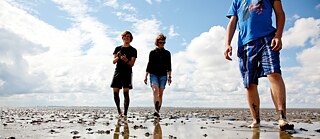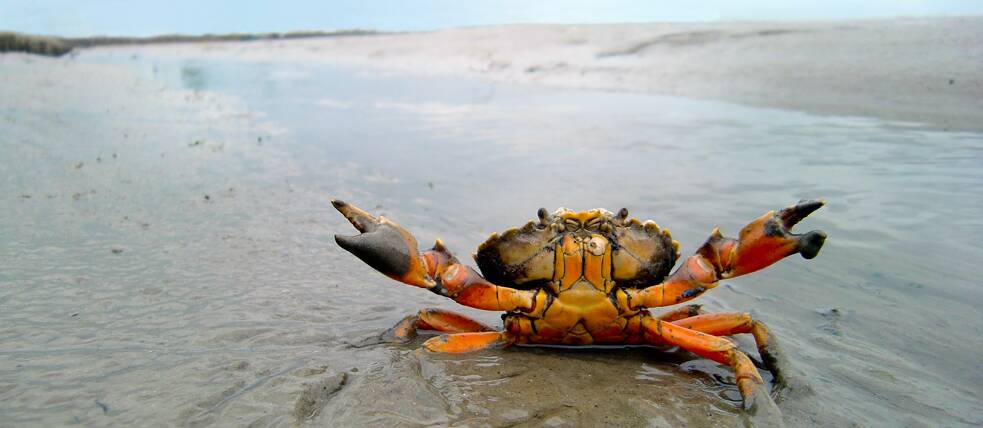Germany’s northern coast has been shaped by the wind, the currents and the tides, creating the Wadden Sea. It provides a habitat for some unique wildlife and offers an opportunity to head out in pursuit of the “small five”.
If the mudflats of the Netherlands and Denmark are included, then the Wadden Sea along Germany’s north coast is the world’s largest contiguous area of intertidal mudflats. It is also listed as a UNESCO World Heritage site. This transitional zone between the permanently submerged sea floor and the land creates a habitat for some rather special wildlife, including five diminutive species that are known – with typical north German modesty – as the “small five” of the Wadden Sea. These are the lugworm, cockle, shore crab, brown shrimp and mud snail. The term is an allusion to the “big five” that every safari tourist hopes to spot in Africa: elephants, rhinoceroses, buffalos, lions and leopards.
But can you really go on safari in Germany? You certainly can, and you won’t even need a jeep, nor will you need to fear attack from wild predators. Your adventure begins on foot: equipped with fishing nets, digging forks and magnifying glasses, you can experience the “small five” up close and personal during one of the numerous guided tours of the Wadden Sea.
Which creature for example leaves behind the little heaps of sand on the tidal flats? It’s the lugworm – it eats sand and then excretes it again, producing these “piles of spaghetti”. The lugworm is perfectly adapted to its environment, using the sand as food to survive in this low-oxygen underworld. The shore crab is the sprinter among the small inhabitants of the Wadden Sea, darting at speeds of up to one metre per second over the mudflats – sideways, of course. And if you’ve never encountered the world’s fastest snail, you should take a closer look at the mud snail. Large numbers of these creatures graze the surface of the tidal flats, helping to create the mud with their excrement. That’s why the mudflats feel so soft and velvety under your feet. Wadden amazing experience!
Detours
What does Görliwood mean, why can you find a piece of the Caribbean in Bavaria and where can you dance in front of bucket wheel diggers? In our series we take you on a trip each month to somewhere in Germany that you may not yet know but should definitely be introduced to. We reveal places that are not to be found on the usual tourist trails. Are you ready for a bit of a detour?
September 2024




